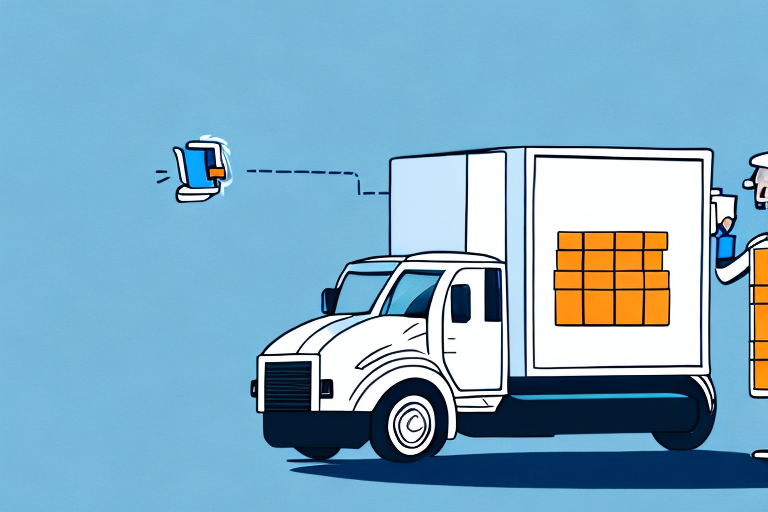Understanding Proof of Delivery: A Comprehensive Guide
Proof of delivery (POD) is a critical document that serves as evidence that a delivery was successfully completed. It typically includes essential details such as the recipient's name and signature, the date and time of delivery, and a list of the items delivered. While POD is widely used in the logistics and transportation industries, it is also applicable in various other sectors where goods or services are delivered to customers.
Importance of Proof of Delivery for Businesses
Proof of delivery is indispensable for businesses for several reasons:
- Verification: Ensures that the correct items are delivered to the right recipient.
- Dispute Resolution: Aids in resolving any disputes or claims related to deliveries.
- Compliance: Provides documented evidence of adherence to customer and regulatory requirements.
- Process Improvement: Identifies areas for enhancing the delivery process.
Additionally, POD enhances customer service by providing accurate and timely information about delivery status, thereby increasing customer satisfaction and loyalty. Tracking delivery performance through POD can help identify and rectify issues or delays, ensuring timely deliveries and better customer experiences.
Evolution of Proof of Delivery: From Paper to Digital
Traditional Paper-Based Proof of Delivery
Historically, POD was managed using paper documents. The recipient would sign a physical delivery note to confirm receipt of items. This method, while effective, had limitations such as susceptibility to loss, damage, and inefficiency in data management.
Electronic Proof of Delivery (ePOD)
With advancements in technology, many businesses have transitioned to electronic proof of delivery (ePOD) systems. ePOD involves the use of mobile devices like smartphones or tablets to capture electronic signatures and other delivery details. This data is then transmitted in real-time to central systems, streamlining the delivery process.
**Benefits of ePOD include:**
- Reduced paperwork and administrative tasks
- Enhanced accuracy and reliability of delivery information
- Real-time data transmission and visibility
- Environmental benefits by minimizing paper use
Studies have shown that implementing ePOD can increase delivery efficiency by up to 30% and reduce errors significantly (Source: U.S. Department of Transportation).
Various Methods of Proof of Delivery
Businesses can employ different POD methods based on their operational needs:
- Paper Proof of Delivery: Traditional method using physical documents.
- Electronic Proof of Delivery: Digital capture of delivery information.
- Confirmation of Receipt: Used in service industries where no physical items are delivered.
- Delivery Tracking: Allows customers to monitor the progress of their deliveries online.
Advanced methods include the use of barcodes or QR codes, which are scanned upon delivery to create a digital record. In sectors like healthcare, GPS tracking supplements POD by providing precise location and timing information.
Implementing Electronic Proof of Delivery
Adopting ePOD systems offers numerous advantages over traditional methods:
- Minimized paperwork and reduced administrative workload
- Instant access to delivery data and real-time updates
- Enhanced accuracy and reduced risk of errors
- Quicker resolution of delivery-related issues
- Improved customer satisfaction through transparent processes
Creating an Effective Proof of Delivery Document
To ensure a smooth delivery process, it's essential to create a comprehensive POD document. Here are some best practices:
- Include all necessary delivery details, such as recipient's name, address, and delivery date and time.
- Provide a clear description of the delivered items.
- Obtain the recipient's signature to confirm receipt.
- Use a standardized and easily understandable format.
- Securely store POD documents for future reference.
Making POD documents digitally accessible to all relevant parties enhances transparency and efficiency. Regularly reviewing and updating POD processes based on feedback ensures they remain effective and relevant.
Addressing Common Challenges with Proof of Delivery
Despite its benefits, POD can present challenges:
- Lost or Illegible Documents: Paper-based systems are prone to loss and damage.
- Inaccurate Information: Manual entry errors can lead to incorrect delivery data.
- Compliance Issues: Failing to meet delivery requirements can result in non-compliance.
Technology solutions like ePOD systems mitigate these challenges by automating data capture and ensuring real-time accuracy. Implementing clear delivery policies and providing proper training to staff further enhances the reliability of POD processes.
To improve visibility into deliveries, businesses can use GPS tracking and other location-based technologies. These tools provide real-time updates, enabling businesses to offer accurate delivery estimates and proactively address potential issues.
Leveraging Technology to Enhance Proof of Delivery
Technological advancements are revolutionizing the delivery industry, enhancing the efficiency and accuracy of POD processes. Key technology solutions include:
- Real-Time Delivery Tracking: Systems that provide instant visibility into delivery status.
- Route Optimization Software: Tools that plan the most efficient delivery routes.
- Electronic Proof of Delivery Systems: Platforms that digitize and automate POD processes.
ePOD systems, in particular, allow for the electronic capture of signatures, photos, and other pertinent delivery data, which are instantly sent to central databases. This not only accelerates the delivery process but also reduces the risk of paperwork-related issues.
Moreover, mobile applications offer customers real-time tracking of their deliveries, enhancing transparency and trust. According to a report by Forbes, businesses that implement advanced POD technologies see a significant boost in customer satisfaction and operational efficiency.
Best Practices for Managing Proof of Delivery Records
Effective management of POD records is vital for compliance, customer service, and operational efficiency. Best practices include:
- Establishing clear policies and procedures for managing and storing POD documents.
- Utilizing secure storage solutions, such as cloud-based platforms or encrypted physical storage.
- Regularly auditing POD records to identify and rectify discrepancies.
- Ensuring easy accessibility of POD records to authorized personnel.
Legal Considerations of Proof of Delivery
POD carries significant legal implications for both businesses and customers, especially in situations involving disputes or claims. Key legal considerations include:
- Compliance with relevant delivery-related regulations and laws.
- Ensuring all necessary information is accurately captured in POD documents.
- Establishing clear procedures for handling delivery disputes or claims.
- Maintaining accurate and up-to-date POD records for legal and compliance purposes.
Choosing the Right Proof of Delivery Solution for Your Business
Selecting an appropriate POD solution depends on various factors, including industry type, business size, and budget. Consider the following when choosing a POD system:
- The complexity and functionality required by your delivery operations.
- Ease of use and compatibility with existing business systems.
- Cost-effectiveness and return on investment (ROI).
- Availability of vendor support and training services.
Real-World Applications and Impact of Proof of Delivery
Proper implementation of POD can significantly impact business operations and customer satisfaction. Examples include:
- Transportation Companies: Utilizing ePOD to enhance delivery efficiency and customer satisfaction.
- Retailers: Implementing delivery tracking systems to provide real-time shipment updates to customers.
- Service Providers: Using confirmation of receipt to assure customers that their service requests have been processed.
Future Trends and Innovations in Proof of Delivery
The landscape of POD is continuously evolving with emerging technologies and trends. Future developments include:
- Drones and Autonomous Vehicles: Increasing use for deliveries, enhancing speed and reducing costs.
- Artificial Intelligence and Machine Learning: Integrating AI to optimize delivery routes and predict delivery times.
- Blockchain Technology: Utilizing blockchain for secure and transparent delivery tracking and verification.
As businesses strive to improve the efficiency and reliability of their delivery processes, POD will remain a pivotal component. Embracing the latest technologies and best practices will enable businesses to provide superior delivery experiences while ensuring compliance and meeting legal requirements.
Frequently Asked Questions About Proof of Delivery
- Who is responsible for ensuring that proof of delivery is provided?
Typically, the delivery service provider is responsible for obtaining and maintaining POD records. - What happens if there are discrepancies or issues with the proof of delivery document?
Discrepancies should be addressed promptly through internal reviews and, if necessary, by engaging with the customer to resolve the issue. - What happens if the recipient refuses to sign the proof of delivery document?
Alternative verification methods, such as photo evidence or GPS tracking, can be used to confirm delivery. - Is it possible to use digital signatures for proof of delivery?
Yes, digital signatures are widely accepted and offer a secure and efficient way to confirm deliveries.
Conclusion
Proof of delivery is an essential element of modern delivery operations, offering benefits ranging from enhanced verification and compliance to improved customer satisfaction. By leveraging advanced technologies like electronic proof of delivery systems, businesses can streamline their delivery processes, reduce errors, and provide customers with transparent and reliable delivery experiences. Staying abreast of future trends and continuously refining POD practices will ensure that businesses remain competitive and capable of meeting evolving customer expectations.






















